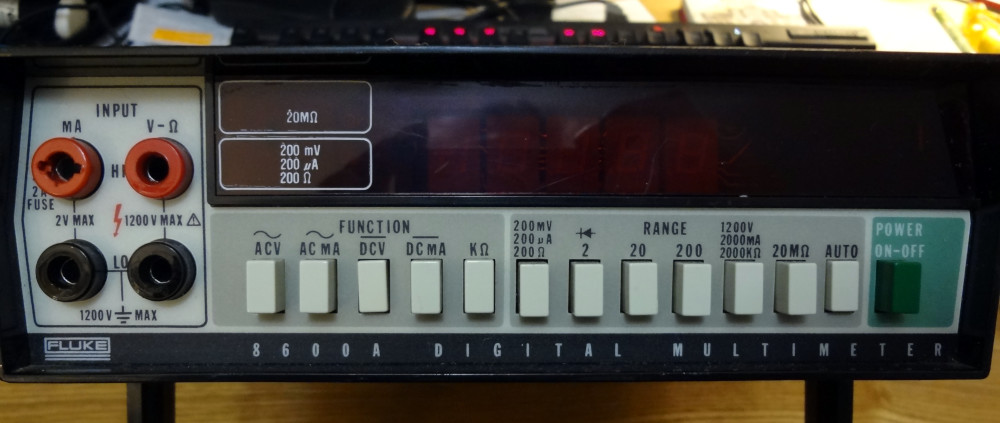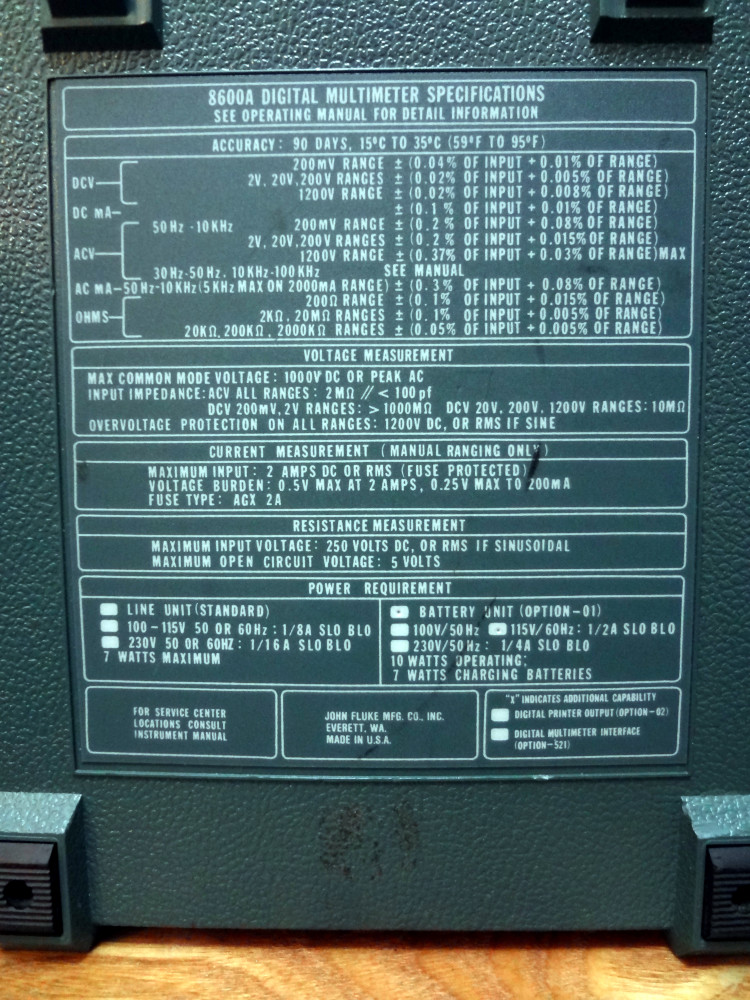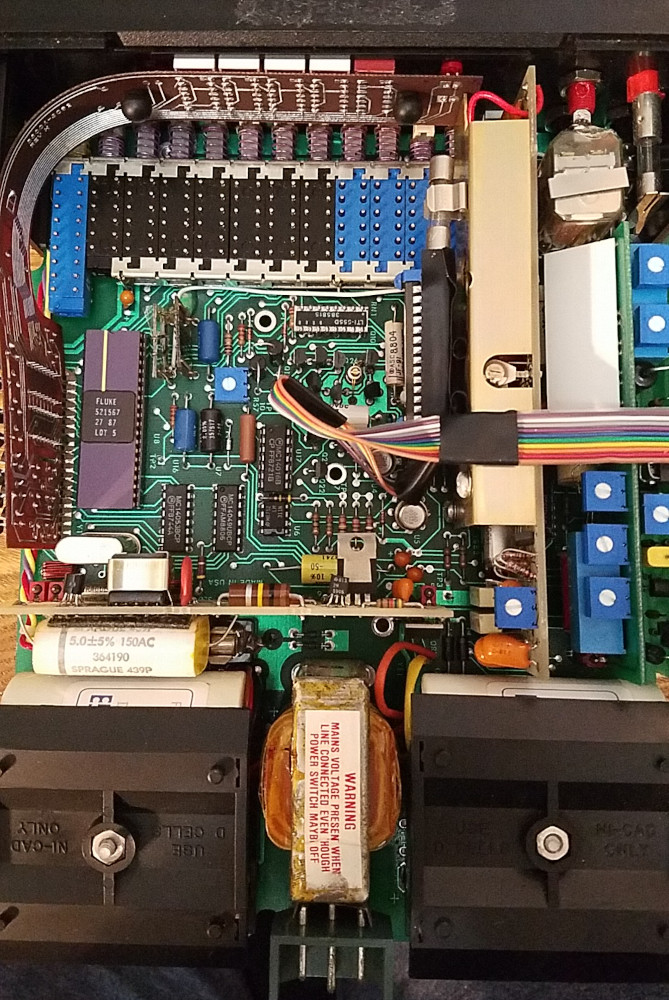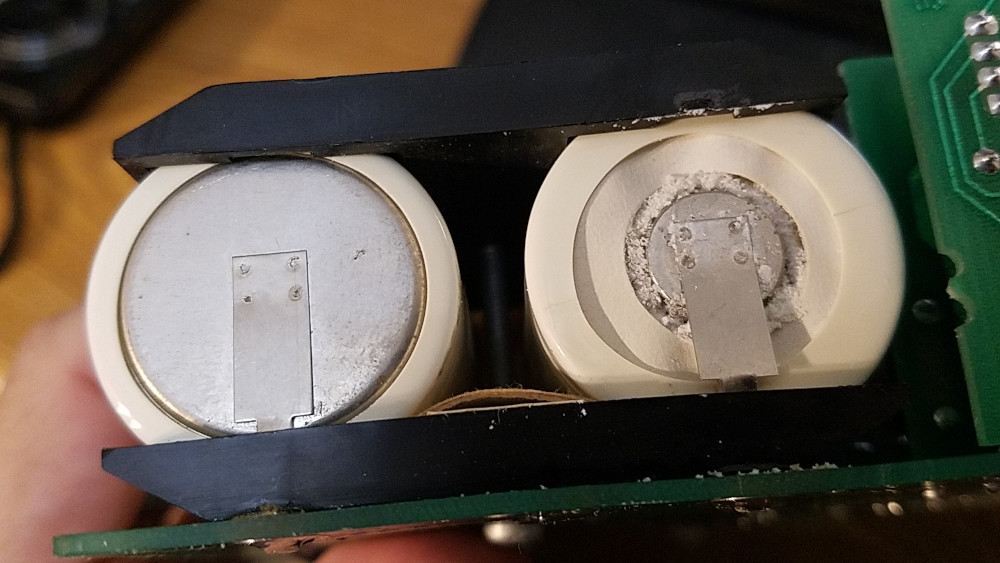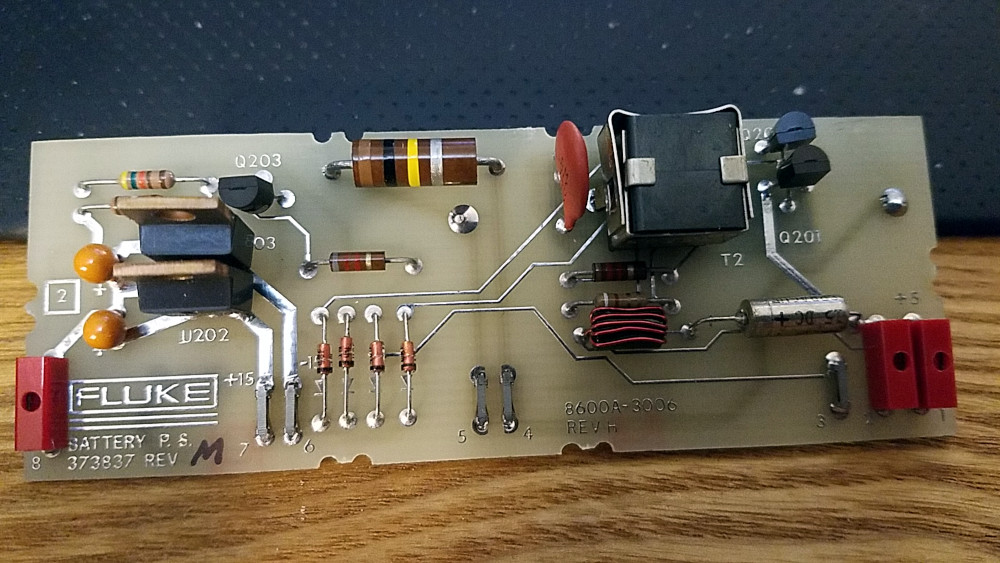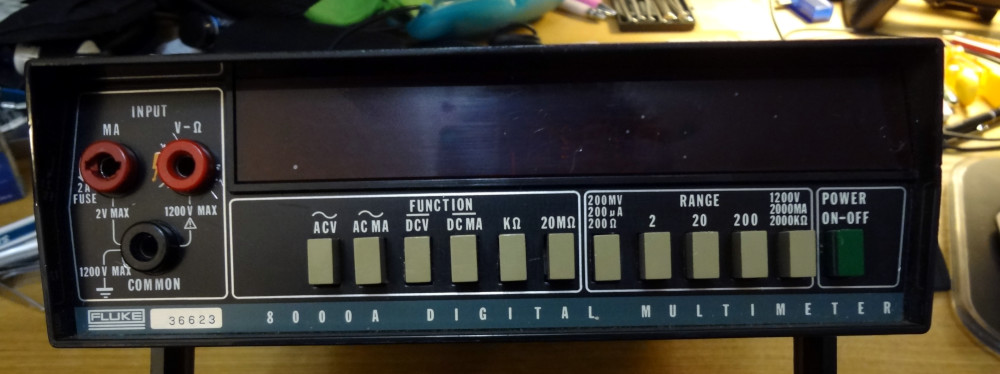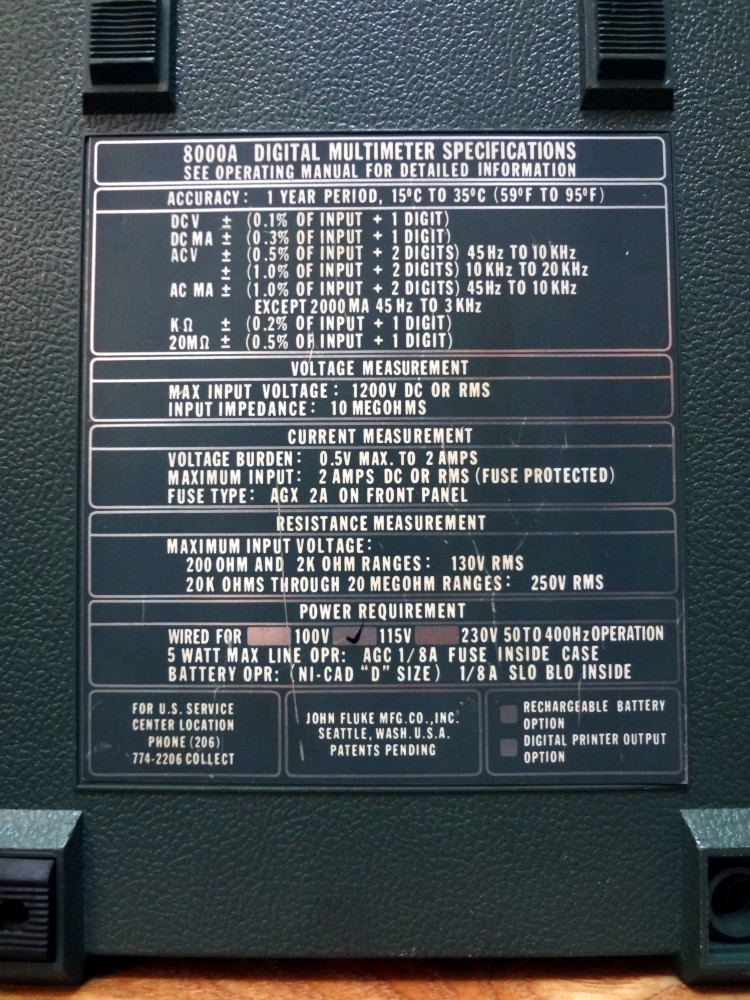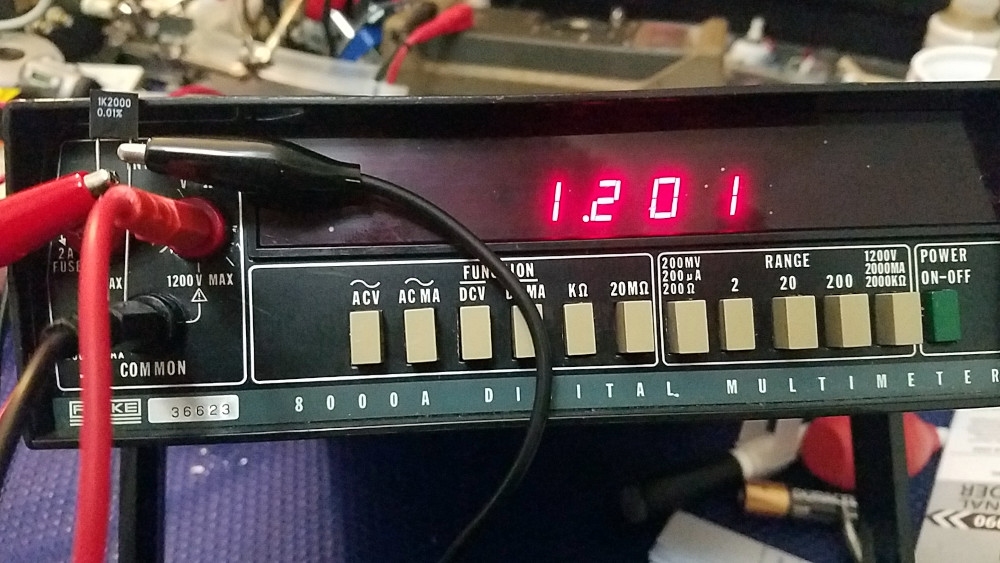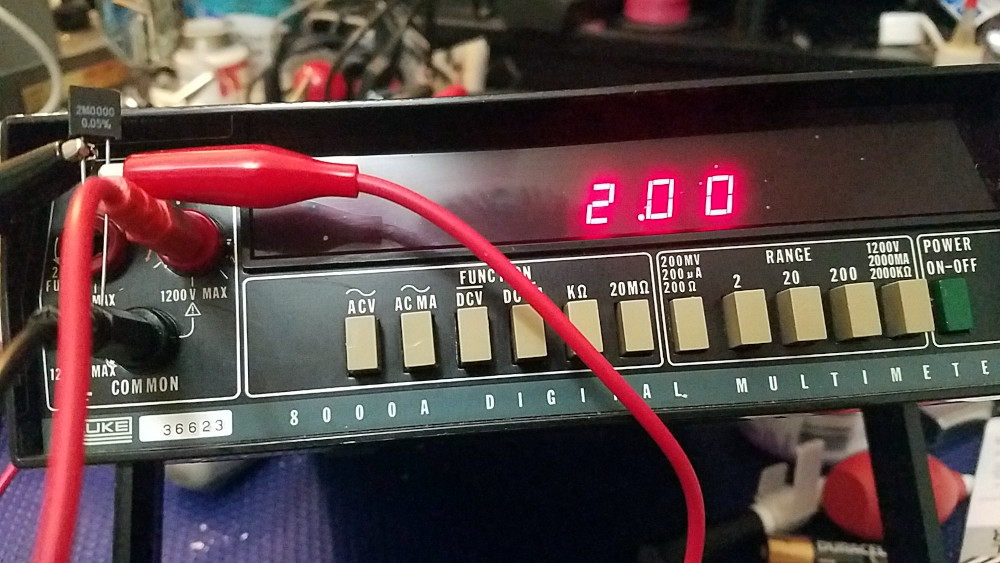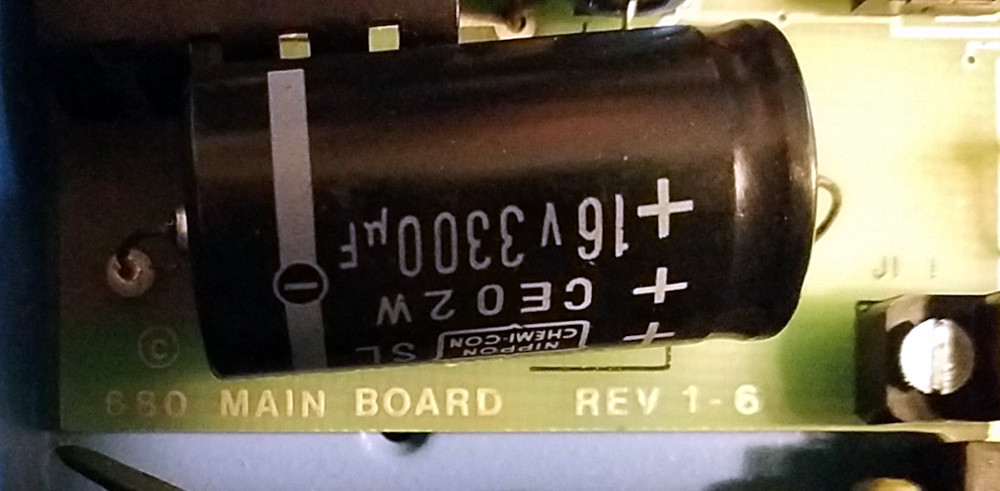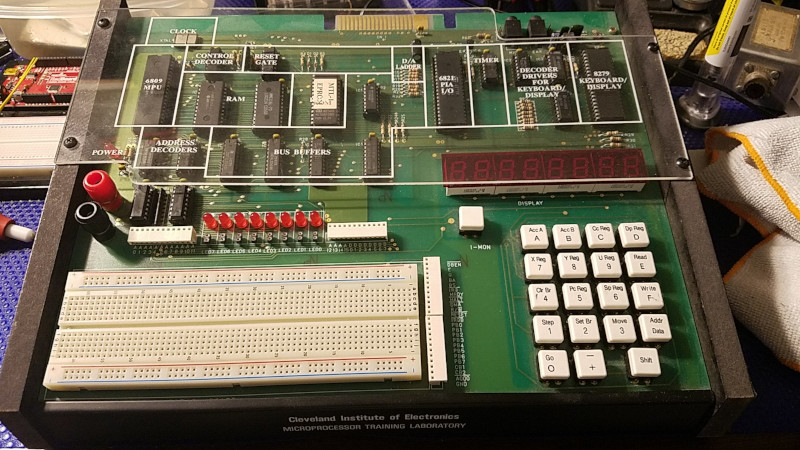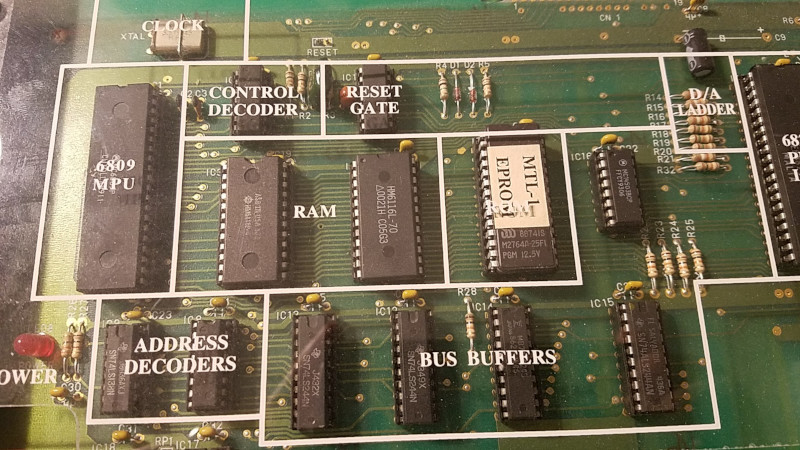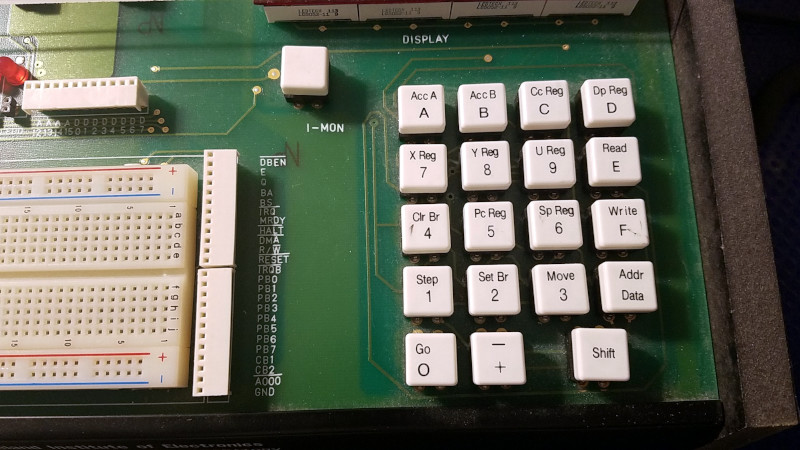The other $5 digital multimeter that I picked up at the Shelby Hamfest was a Fluke 8600A DMM. This one was quite a bit heavier than the 8000A.
Like the 8000A, there’s a label on the bottom that lists the specs and configuration. This unit came with the rechargeable battery option, which would explain the extra heft.
Unfortunately, this one didn’t do anything when the power button was pressed. Getting the cover off the DMM is a simple matter of removing one screw just above the power connector (normally covered by a “Calibration void if removed” type sticker).
The insides are a considerably more complex than the 8000A. A large chunk of the space toward the transformer and power plug end of the board are taken up by the rechargeable batteries. This DMM appears to have had some modifications or repairs made to it.
A cursory inspection shows one significant issue: leaked batteries.
At some point, one of the D-cell NiCad batteries was replaced with an AA sized NiCad battery.
The manual I found (dated 1981) says the batteries can be replaced, but the ones in this unit have been tack soldered to the terminals. Perhaps the battery options were changed in later models of the meter.
Another IC (possibly a ROM) was also added to the meter and connected to the board with some ribbon cable. The ribbon cable is soldered to a DM47S188AN (256 bit PROM) and the mystery IC is just attached to the RF shield of one of the daughter boards with some electrical tape. Maybe a repair job, or a modification?
There are four daughter boards in the case that attach to the main board via pin and socket connectors. One board is marked as a battery power supply, which I’d guess takes care of charging the NiCad batteries.
Board #2 is marked “OHMS CONV ASSY”
Board #3 was marked “INPUT DIV”
Board #4 was a fairly large one with a large shield on it. No clear silkscreen markings labeling the board like the others but according to the manual, it’s the AC converter board. it also had a holder for a spare fuse. Very thoughtful.
Other than the batteries, I don’t see any obvious problems with any of the other components in the meter. I’m thinking maybe if pull out the leaked batteries, that might get the meter running but I’ll need to study the schematics to see how the batteries are connected to everything to figure out if that will work. This thread on the EEVBlog forum has some potentially useful information.
I’ll put this with the rest of the project items in the stack.
